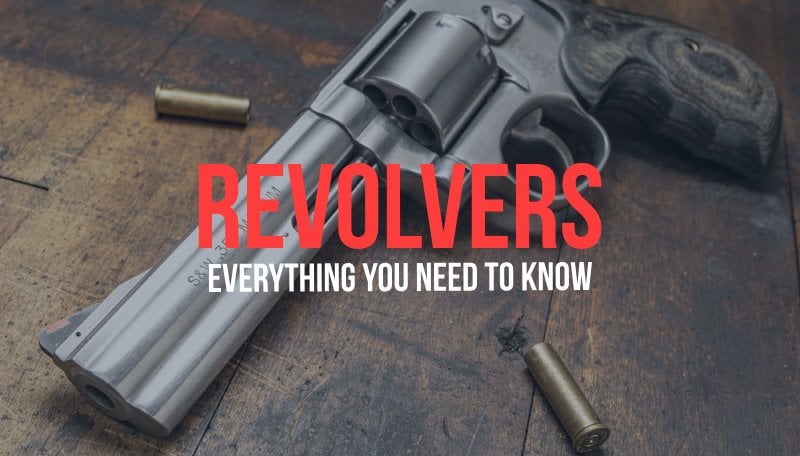
Last Updated on
Despite the growing popularity of semi-automatic pistols, wheel guns continue to hold their own in the firearm market. Brands renowned for their top-notch semi-auto pistols, like Smith & Wesson and Ruger, are still manufacturing revolvers, reaffirming the timeless appeal of these classic firearms.
Table of Contents
Is Revolver a Pistol?
Revolver Anatomy: How Do Revolvers Work?
Types of Revolvers: Single-Action vs. Double-Action Revolvers
Revolvers vs. Semi-Auto Pistols
Revolver Ammo & Popular Revolver Calibers
What Revolver Caliber to Choose
BEST REVOLVERS
Is Revolver a Pistol?
Before we delve into the comparison, let’s clarify some terminology. Handguns are a broad category of firearms designed to be handheld and include both pistols and revolvers. A pistol is a type of handgun where the chamber is integral to the barrel, while a revolver has multiple chambers and a single barrel. When you cock the hammer or press the trigger, the mechanism moves the cylinder one spot, aligning the top chamber with the barrel. Alright, let’s break down the nitty-gritty of how revolvers function.
Revolver Anatomy: How do Revolvers Work?
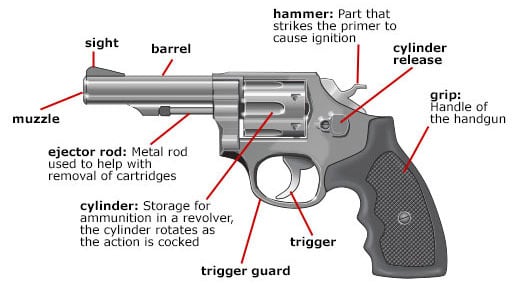
Loading: The first step in the operation of a revolver is loading the ammunition. To do this, you need to unlock the cylinder by pushing the cylinder release and swinging out the cylinder. It contains several chambers, and each chamber is loaded with a round. A standard revolver has six chambers (that’s why it is often called a 6-shooter), meaning it can fire a maximum of six rounds before needing to reload.
Cocking the Hammer: After loading, the cylinder is locked back into place. To prepare the revolver for firing, you must manually cock the hammer located above the grip area in a single-action (SA) revolver or simply pull the trigger in a double-action (DA) revolver. Interestingly, in SA revolvers, it’s cocking the hammer that rotates the cylinder. In contrast, in DA revolvers, the cylinder rotates during the backward motion of the hammer when the trigger is being pulled.
Indexing the Cylinder: When you cock the hammer or pull the trigger, the cylinder rotates to align the next chamber with the barrel and the firing pin. This process is called indexing.
Firing: Pulling the trigger releases the hammer. The hammer strikes the firing pin, which then hits the primer compound on the rear of the round. This causes a small explosion, igniting the gunpowder within the round.
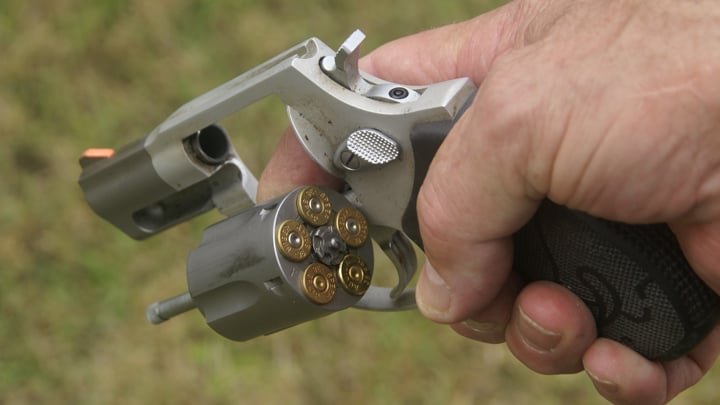
Ejection: After firing, the spent cartridge remains in the chamber. If you handle a DA revolver, you can eject all the spent cartridges by opening the cylinder and manipulating the ejector rod. The ejector rod, positioned in the center of the cylinder, has the extractor attached to its end. The rim of each round rests against the extractor, and by pushing on the ejector rod, the extractor engages with the cartridge rims, pulling them from their chambers. If you own an SA revolver, you half-cock the hammer, which releases the cylinder to revolve freely, and then you open the gate and push the ejector rod that expels one cartridge at a time.
Revolver Types: Single-Action vs. Double-Action Revolvers
Single-Action Revolvers
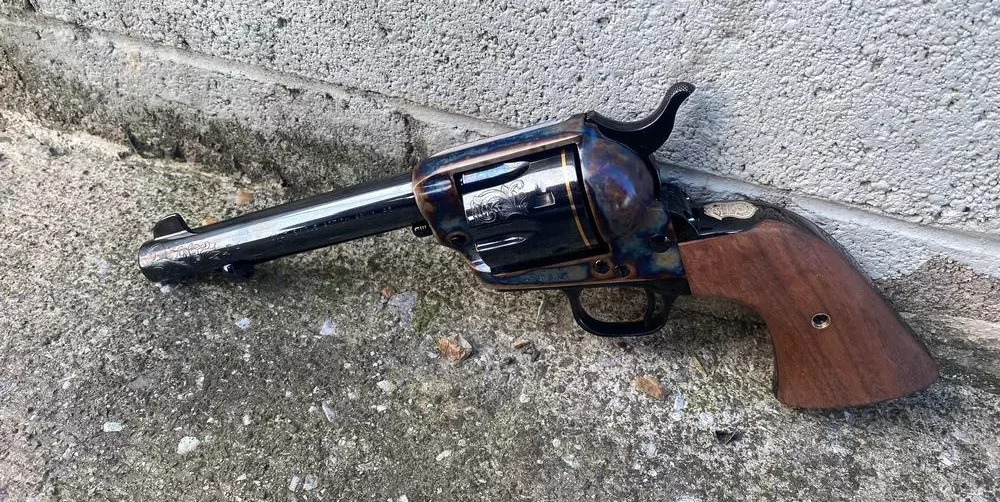
Single action is a term used to describe revolvers like the Colt Single Action Army, where the trigger performs one function — releasing the hammer. To fire a round, you must first manually pull back, or ‘cock,’ the hammer. Once the hammer is cocked, you can pull the trigger, which releases the hammer and fires the round. If the hammer is not cocked, pulling the trigger does nothing. Therefore, after each shot, you need to manually re-cock the hammer to prepare for the next one.
Reloading an SA revolver is a slow process. First, you half-cock the hammer and rotate the cylinder by hand, aligning each chamber with the ejector rod to unload the cartridges one by one.
Double-Action Revolvers
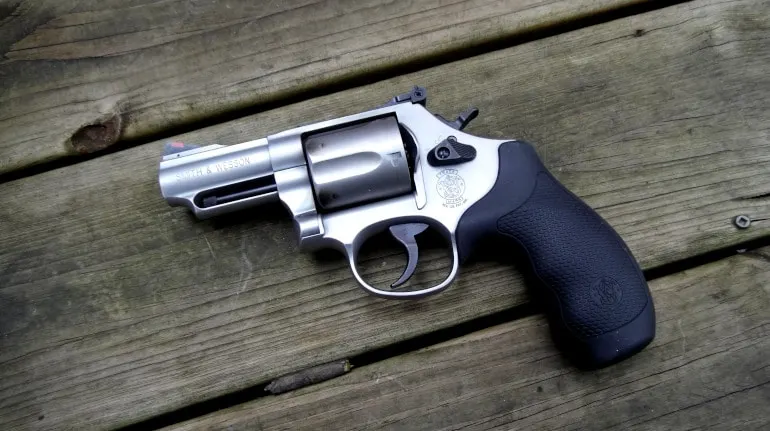
There are two DA revolver designs: those that can be fired in DA and SA modes, i.e. DA/SA revolvers, and double-action-only revolvers (DAO).
DA/SA revolvers are the most common types found today, especially those designed for self-defense or duty use. In double-action mode, the trigger cocks and releases the hammer, which means a longer and heavier trigger pull. To fire one in a single-action mode, you need to cock the hammer with your thumb and then release it by pulling the trigger. An SA trigger pull is shorter and lighter, allowing for more precise shooting. In a DA/SA revolver, the hammer is always exposed, giving you the option to manually cock it if desired.
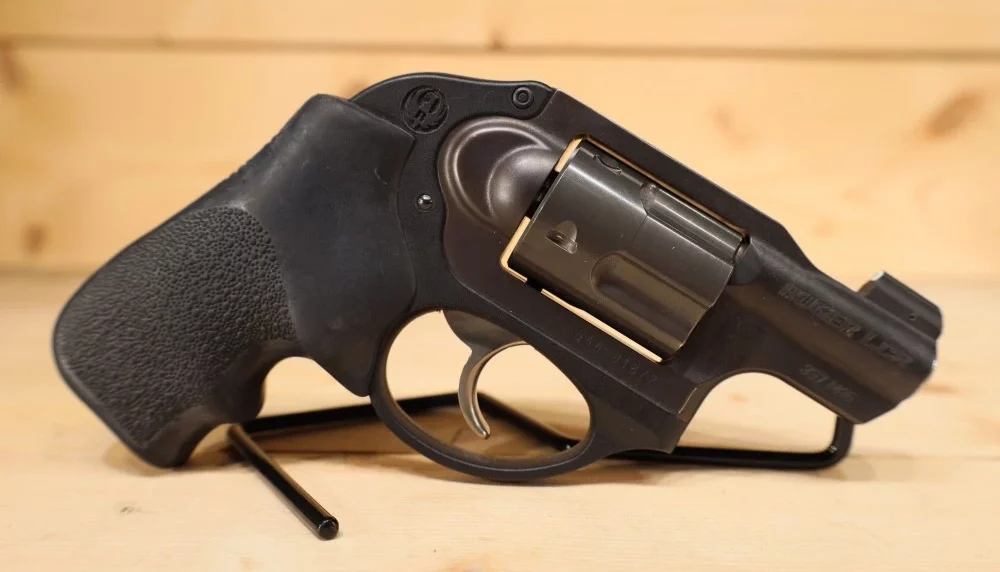
DAO revolvers are a favorite for concealed carry due to their design since they feature a hammer that is either internal or concealed, meaning you only need to pull the trigger to fire the gun. This design eliminates the possibility of the hammer spur snagging on clothing during the draw.
In DA revolvers, loading and unloading involves activating the cylinder latch to free the cylinder from the frame. You then swing the cylinder out to the side, revealing the chambers.
The cylinder latch’s operation can vary depending on the manufacturer. For instance, in Colt revolvers, you slide the cylinder latch backward. On the other hand, in Taurus and Smith & Wesson revolvers, you slide the latch forward. In Ruger revolvers, the cylinder latch is a button that you push down.
Revolvers vs. Semi-Auto Pistols
Now that you know what exactly a revolver is, how a revolver works, and what the three main designs are, it’s time to ask yourself, “Do I need a revolver after all?”
Though wheel guns have pretty serious disadvantages, primarily in the context of self-defense, they have lots of unique benefits. Let’s now see what they are.
Pros and Cons of a Revolver
Ease of Use
Wheel guns are straightforward and user-friendly. Unlike semi-automatic pistols, there are no safety levers, de-cockers, or slides to rack to make a revolver ready to shoot. You don’t need to worry about a weak magazine or recoil springs, too. This makes a 6-shooter an excellent choice for new and inexperienced shooters, especially if we talk about using a gun in high-stress situations.
Ease of Maintenance & Durability
With fewer moving parts than their semi-auto counterparts, revolvers are robust and reliable. This simplicity means less chance of malfunction, reducing potential frustrations for beginners who may struggle to diagnose and fix problems.
Reliability & Safety
Revolvers are safe and foolproof firearms. The loaded status is easily observed at the rear of the cylinder when it’s closed. Gently shake a revolver, and it will give you audible proof of rounds loaded. Again, revolvers are less complex than semi-autos, so you don’t need to deal with all the buttons, levers, and parts, which lowers the chance of a mistake.
With a wheel gun, it’s easy to avoid the problem of misfires. If you happen to have a defective cartridge, you simply pull the trigger again, and the revolver advances to the next cartridge. It’s called a second-strike capability.
Revolvers also don’t have an issue of being taken out of battery. If you’re in a physical struggle, your attacker’s body could press against your semi-auto’s muzzle. This could move the slide out of its normal position, stopping the gun from firing.
Concealability
S&W J-frames, Colt D-frames, Ruger LCRs, and other small-frame revolvers are easily concealable in a pocket holster. If a revolver sports a hammerless design, this and a generally smaller grip profile make the draw from the pocket quicker than some semi-autos.
No Need to Rack a Slide
For those who struggle to physically rack the slide of a pistol under pressure, such as the elderly or injured, a revolver is easier to get into action.
Accuracy
As we’ve mentioned, revolvers have fixed barrels, which makes them inherently more accurate than most semi-auto pistols. On the other hand, even with tight lockup, there’s still a small amount of play in the firing cycle of a semi-auto pistol.
Revolver Limitations
Despite their many advantages, revolvers do have some drawbacks. They have limited capacity, typically holding only five or six rounds compared to the double-digit capacities of many semi-auto pistols. Additionally, even when using a moon clip, reloading a revolver is slower and requires more effort than changing a magazine in a semi-auto pistol. Plus, the rate of fire of semi-autos, like single-action-only and striker-fired pistols, is higher than revolvers.
Considering a Revolver for Different Applications
Revolvers for Concealed Carry
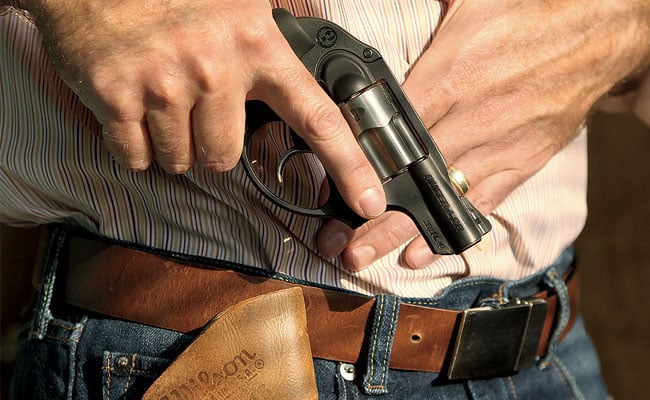
Concealability and draw speed are two primary considerations when it comes to CCW. If you’re looking for a simple firearm, aren’t too concerned about capacity, and can effectively conceal a slightly rounder shape of a snub-nose revolver with your clothing and holster, a revolver could be a great choice. Unlike pistols sitting flush against your body, a revolver’s grip slightly protrudes. This means you won’t have to dig as much to get a firm grip while drawing it.
Revolvers for Self-Defense
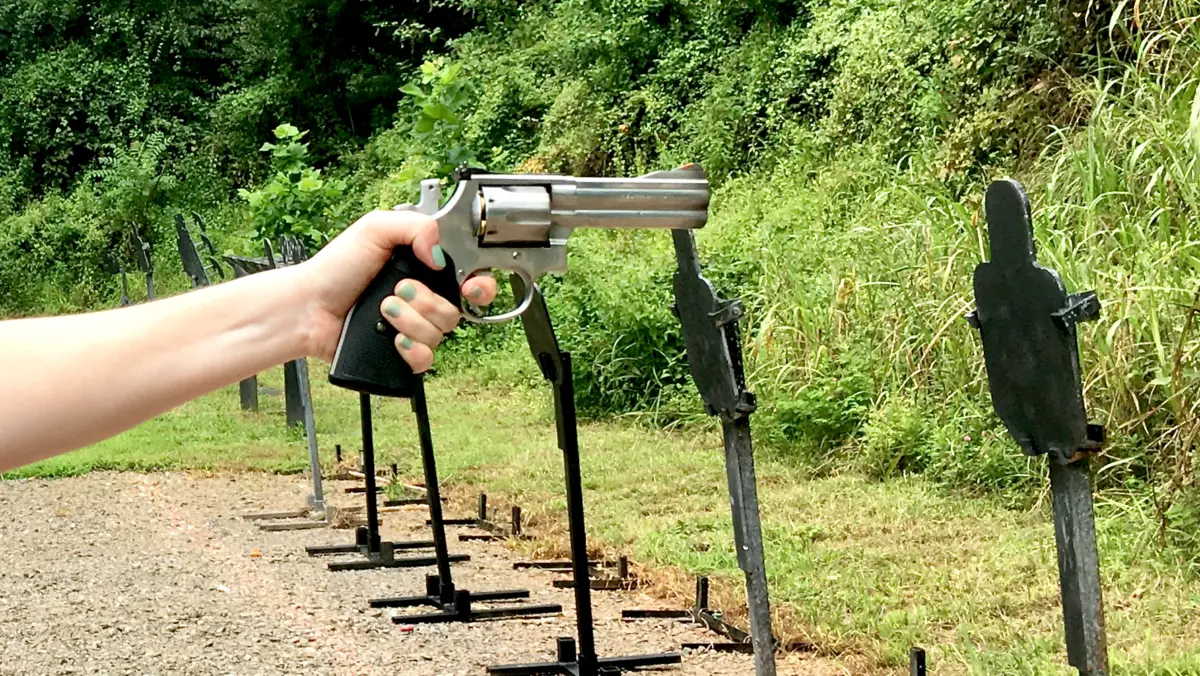
When it comes to self-defense, the most popular wheel guns are those chambered in .22LR, .38 Special, and .357 Mag. The .22 LR is a controversial self-defense cartridge due to its lack of power. Sure, a .22 LR revolver can inflict damage and potentially stop an attacker, but it’s not the best option for colder climates where the bullet may get stuck in heavy clothing.
On the other hand, the .38 Spl and .357 Mag are viable self-defense options, and many revolvers are compatible with both. However, keep in mind that a short barrel of a snub-nose revolver may not allow the ammunition to achieve the required velocity for defensive loads. Therefore, ideally, your revolver for self-defense should accept +P loads.
Revolvers shine as backup guns. So you may put your backup revolver in a quality ankle holster while carrying your semi-auto pistol IWB.
Revolvers for Home Defense
In a home defense context, choosing a revolver is easy. You’re not limited to a certain size, so a heavy-frame revolver with a 4–6 inch barrel is preferable. Plus, this type of revolver provides additional gripping surface and weight, minimizing felt recoil.
Revolvers for Hunting & Shooting
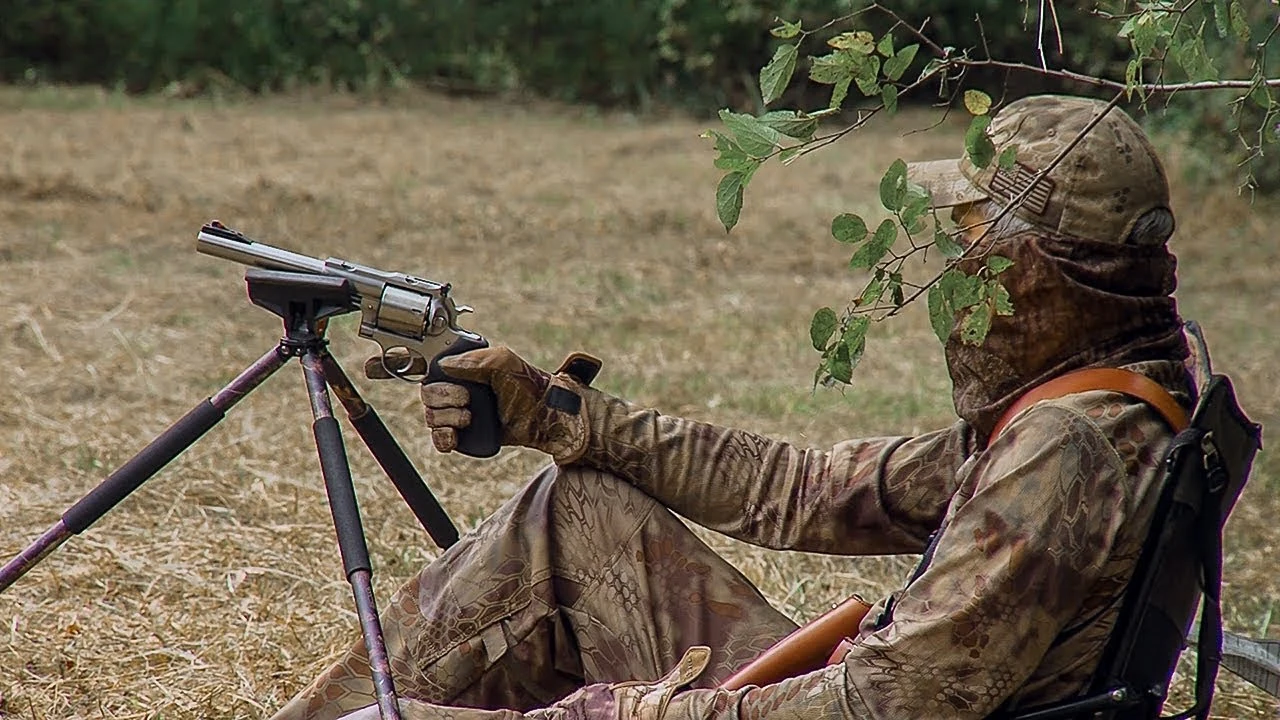
And what about hunting or shooting? Revolvers can handle high-powered cartridges, such as .44 Mag and .45 Colt. Additionally, they are generally more accurate than semi-autos due to their fixed barrels, which can be as long as 10 inches or even longer. That’s why revolvers are superior handguns for applications where long-range accuracy and power on impact matters.
Yes, 6-shooters have serious drawbacks, especially in the defensive context, but not all people need a cool, high-capacity pistol. Some people are just comfortable with revolvers, and that’s totally fine.
Revolver Ammo & Popular Revolver Calibers
Now, let’s get things clear with all the calibers, revolver ammunition, rims, primer compounds, and the rest.
Rimfire Cartridge & Revolver Ammunition
When it comes to firearms, understanding the ammunition they use is just as important as knowing the mechanics of the gun itself. Now, let’s explore the differences between revolver rounds and pistol rounds and the most popular calibers for revolvers.
Rimfire vs. Centerfire
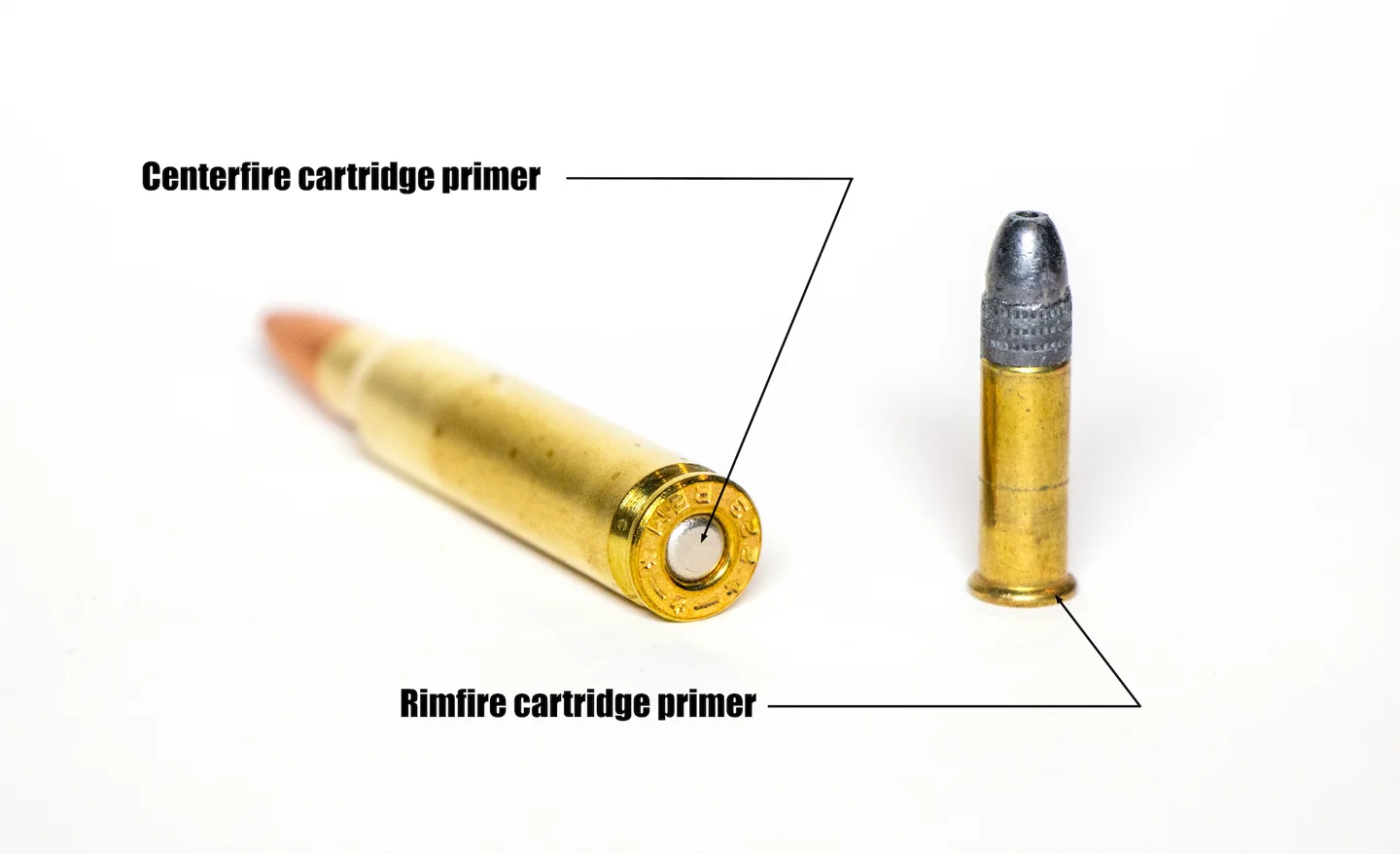
The names of these two types of ammo refer to where the primer (the component that ignites the powder to fire the round) is located within the cartridge.
In rimfire cartridges, the primer is contained within the rim of the base, hence the name ‘rimfire.’ When the gun’s firing pin strikes the rim, it ignites the primer, which in turn ignites the powder and fires the round.
On the other hand, centerfire cartridges house the primer in a small cup in the center of the base, hence ‘centerfire.’ The firing pin strikes this central primer to ignite the round.
Why Revolvers Use Only Rimfire Ammo
Revolvers are typically designed to shoot rimmed cartridges due to the construction of the cylinder. The rim machined around the bottom of the cartridge, allows the extractor to hold the cartridges securely in place, preventing them from moving back and forth inside the cylinder chambers.
Rimless cartridges lack this flange, meaning they can’t be held by the extractor. However, they do have a groove that aids ejection in semi-automatic pistols.
Are There 9mm Revolvers?
Yes, there are! Though revolvers aren’t traditionally designed to accept rimless rounds, there are 9mm revolvers available in the market. To chamber rimless cartridges into a revolver, you simply need a moon clip, a tool usually designed to act as a speed loader. It prevents cartridges from sinking too deep into the chambers.
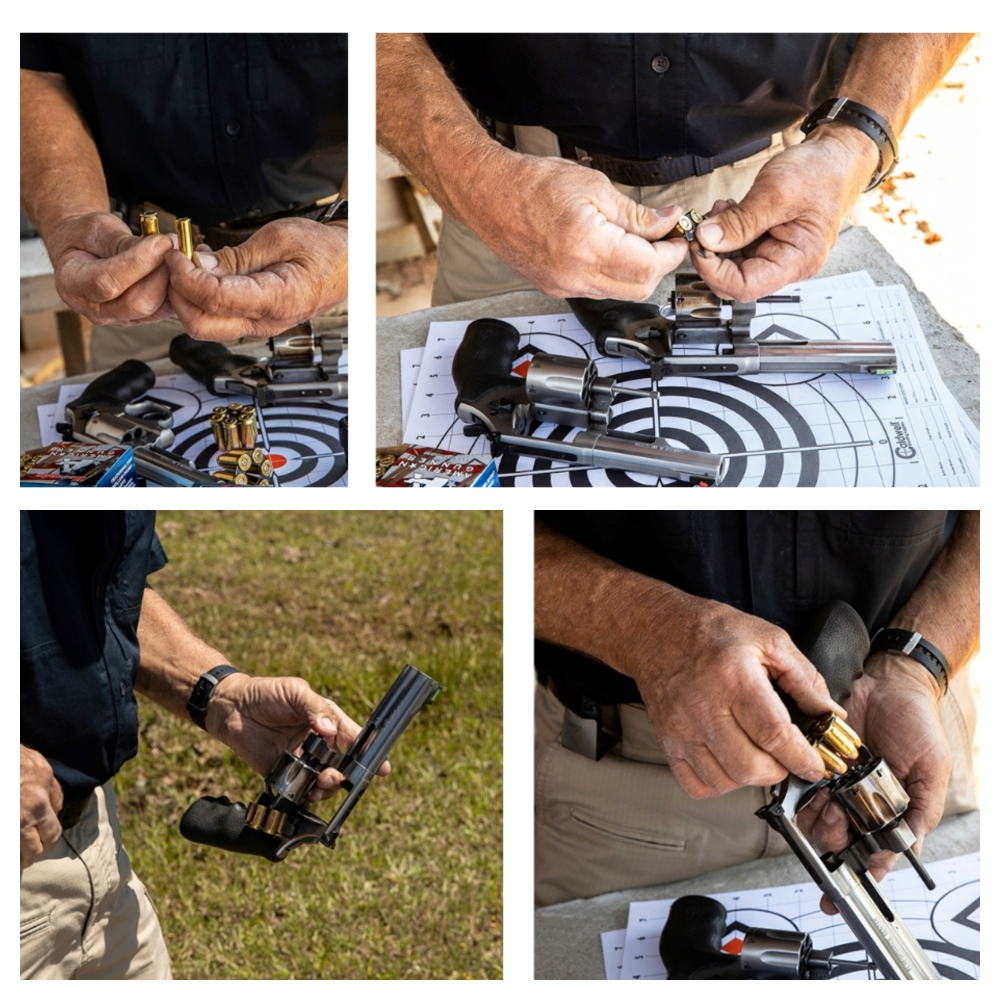
Some of the best 9mm revolvers include:
- Ruger SP-101
- Ruger LCRx
- Ruger Blackhawk
- Smith & Wesson 929
- Smith & Wesson Performance Center 986
- Taurus 692
- Taurus 905
- Charter Arms Pitbull
What Revolver Caliber to Choose
The caliber of a revolver defines its application. Here’s a brief overview of the most popular revolver calibers and their performance:
.22 LR
The .22 LR, despite being nearly 150 years old, remains one of the most popular cartridges. It’s underpowered, with a short effective range, but it offers the lightest recoil and chambers into revolvers as well as semi-automatic pistols, rifles, and shotguns. It’s also the cheapest handgun ammo available. While it lacks the power for efficient self-defense, it’s an excellent introductory cartridge for beginners.
.38 Special
The .38 Special holds a .357 bullet and has dimensions similar to the .357 Magnum, except for the case length. That’s why many .357 revolvers accept .38 Spl ammo, but not otherwise, as the .38 Spl is far less powerful chambering than the .357 Mag. The .38 Special cartridge also offers a milder recoil, and the .38 Spl ammo is cheaper than .357, making this caliber a good option for plinking and practice. For self-defense, consider using more potent +P ammo, as an increase in power improves terminal ballistics.
.357 Magnum
The .357 Magnum is a powerful round that shouldn’t be fired from a .38 Special revolver due to the high pressures it generates. Lighter loads are used for self-defense, while heavier loads can take down deer or other similar-sized game animals. Keep in mind, even when loaded lightly, a .357 revolver will kick pretty hard.
.44 Magnum
The .44 Magnum is renowned for its stopping power, making it a popular choice for hunting. Some say that .44 Mag is a good defense cartridge, but while it certainly works for self-defense, we consider it overpowered, although it does give a bit of a margin of error. Additionally, its high recoil can be challenging for some shooters to manage.
.45 Colt
The .45 Colt, also known as the .45 Long Colt, is well-regarded for its accuracy and stopping power, making it a favorite among many revolver hunters and long-range shooters.
Other revolver calibers:
Big game hunting: .454 Casull and .460 Smith & Wesson.
Self-defense and concealed carry: .22 WMR, .22 Mag, .32 H&R, and .327 Federal Mag.
BEST REVOLVERS
Now, let us guide you through the best revolvers for beginners, self-defense, home defense, hunting, target shooting, and plinking.
Best Revolver for Beginners
Ruger Wrangler
- Caliber: .22 LR
- Capacity: 6 rounds
- Barrel Length: 4.62″
- Weight: 30 oz
The Ruger Wrangler is an ideal handgun for beginners, boasting affordability, light weight, and a small size. It’s chambered in .22 LR, which is easy to handle due to its minimal recoil. Designed in the style of Colt’s old single-action army revolver, it offers a crisp, light trigger pull for accurate shooting. While reloading may take some time due to its one-round-at-a-time loading and ejecting mechanism, this isn’t a major issue as the Ruger Wrangler is primarily a plinking or pest control gun rather than a weapon for combat.
Taurus 627 Tracker
- Caliber: .357 Magnum
- Capacity: 7 rounds
- Barrel Length: 4″
- Weight: 28.8 oz
If you’re considering trying out a budget-friendly .38/.357 revolver, the Taurus Tracker revolver is a competitively-priced alternative. It’s less expensive than many similar medium-frame rivals but still offers quality features, such as a 7-round cylinder, a fully adjustable rear sight, and a factory-ported barrel to reduce recoil. By the way, if you’re looking for the best .44 Magnum revolver under $500, the Taurus Tracker 44 is a great deal, although a .44 Magnum revolver isn’t the best beginner gun.
Best Revolver for Concealed Carry
Ruger LCR
- Caliber: .22 LR, +P .38 Special, .327 Fed Mag, .357 Magnum, 9mm, etc.
- Capacity: 5-8 rounds (depending on caliber)
- Barrel Length: 1.87″
- Weight: 13.5-17.1 oz
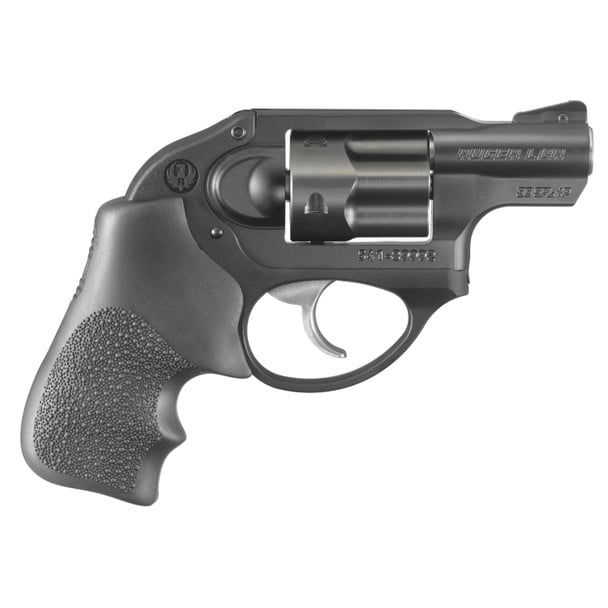
The Ruger LCR is a legendary snub-nose carry revolver that is lightweight and compact and features an innovative design that reduces recoil. The model is available in various calibers, allowing you to choose what suits you best. The Ruger LCR series offers budget-friendly options with great value for money, including a top-notch double-action revolver trigger that operates smoothly with minimal resistance. If you choose the 9mm version, know that the recoil from a 9mm LCR is less intense than a .357 Magnum, but a 9mm packs more punch than a .38 Special. Additionally, 9mm ammo is cheaper, making it a solid choice for both range shooting and concealed carry.
S&W 642 J-Frame
- Caliber: .38 Special +P
- Capacity: 5 rounds
- Barrel Length: 1.875″
- Weight: 14.5 oz
The Smith & Wesson 642 J-Frame is one of the best revolvers with a snag-free design – perfect for quick draw from concealment. Moreover, it’s probably the lightest CCW revolver. And while its light weight might make recoil feel somewhat intense initially, this drawback is offset by the convenience of their compact size.
Colt King Cobra Carry
- Caliber: .357 Magnum
- Capacity: 6 rounds
- Barrel Length: 2″
- Weight: 26 oz
The Colt King Cobra is another great revolver for concealed carry. Its key features include a bobbed hammer and a two-inch barrel, enhancing ease of concealment. The barrel and frame are made from stainless steel and boast a brushed finish, making it durable for daily use. Though it’s a .357 revolver, it can also fire .38 Special rounds.
Kimber K6s
- Caliber: .357 Magnum
- Capacity: 6 rounds
- Barrel Length: 2″
- Weight: 23 oz
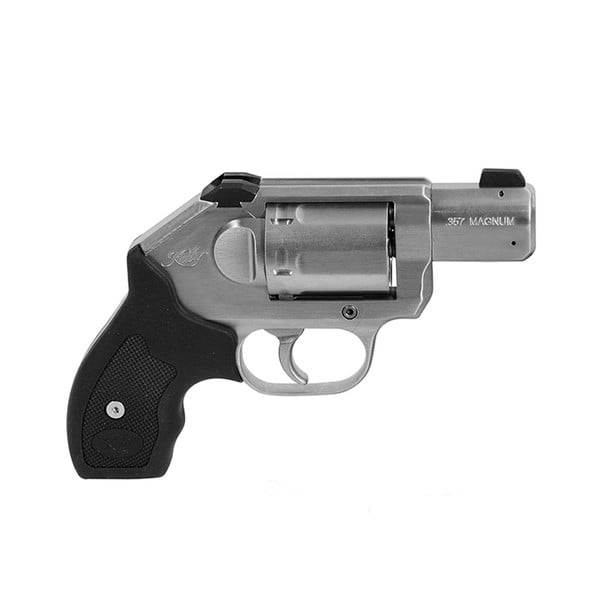
The Kimber K6s, a lightweight revolver designed for carry, features a 6-shot .357 magnum cylinder and weighs just 23 ounces when empty. Notably, its cylinder is slimmer than most, claimed by Kimber to be the narrowest six shooter currently available. The frame and 2-inch barrel are durable stainless steel, and the K6s includes black three-dot sights, a match-grade trigger, rubber grips, and a textured cylinder release. Available in both DAO and DA/SA models, this revolver is excellent for close-range use.
Best Medium-Frame Revolvers for Home Defense
Ruger GP100
- Caliber: .357 Magnum
- Capacity: 6 rounds
- Barrel Length: 6″
- Weight: 45 oz
The Ruger GP100, renowned for its durability, is a heavy-duty revolver weighing 45 ounces due to its all-stainless construction and full underlug. This weight allows it to handle .38 Special and .357 Magnum rounds effortlessly. It comes in both blued and stainless steel finishes, each featuring a fully adjustable rear sight.
S&W 686 Plus
- Caliber: .357 Magnum
- Capacity: 7 rounds
- Barrel Length: 5″
- Weight: 42.6 oz
The Smith & Wesson 686+ is a medium-frame wheelgun that offers excellent balance and handling. It’s a 7-shot .357 revolver with a 4-inch barrel. Built on S&W’s L-frame for durability, this DA/SA revolver features a robust unfluted cylinder. It comes with black synthetic grips with finger grooves, a red ramp front sight, and an adjustable white outline rear sight. If you want a lighter or a more massive version, the 686 Plus offers a variety of barrel lengths, including 3 and 5 inches.
Ruger Single Six
- Caliber: Convertible .22 LR/.22 WMR
- Capacity: 6 rounds
- Barrel Length: 5.5″
- Weight: 33 oz
The Single Six is a single-action, .22 LR/.22 WMR convertible revolver that’s large enough for adult hands yet light enough for all-day carry, becoming the preferred companion of hunters, fishermen, trappers, and outdoor enthusiasts. Not only is it light and portable, but it also boasts excellent accuracy. If you want a .22 revolver for shooting competitions, hunting, low-cost plinking, and defense, the Single Six is an excellent option.
Best .44 Revolvers for Hunting & Long-Range Shooting
Ruger Super Blackhawk
- Caliber: .44 Magnum
- Capacity: 6 rounds
- Barrel Length: 7.5″
- Weight: 48 oz
The Ruger Super Blackhawk is the best single-action .44 revolver, a top choice for those who need heavy-hitting long-range performance. It’s resilient as a rock, even under heavy use in competitive shooting. Having proven its worth in the hands of deer hunters and bear country adventurers, the Ruger Super Blackhawk stands unrivaled as the best .44 Magnum revolver for self-defense or hunting whitetails.
Taurus Raging Bull
- Caliber: .44 Magnum
- Capacity: 6 rounds
- Barrel Length: 6″
- Weight: 53 oz
The Taurus Raging Bull stands out for its potent .44 Magnum chambering, making it a favored choice for hunting and self-defense due to its stopping power. Its unique design features a dual lockup cylinder for better stability, a large, ventilated rib atop the barrel, and a full underlug beneath it, aimed at reducing recoil and muzzle flip for improved accuracy.
Colt Anaconda
- Caliber: .44 Magnum
- Capacity: 6 rounds
- Barrel Length: 6″
- Weight: 53 oz
The Colt Anaconda is known for its high-quality craftsmanship, smooth trigger pull, and excellent accuracy, and, chambered in .44 Magnum, it’s a great magnum revolver suitable for hunting medium to large game. Its reliability and performance earned it popularity among law enforcement officers, competitive shooters, and collectors, enhancing its status as a classic, highly collectible firearm.
Read other posts:
The Best Revolvers of 2023: A Comprehensive Guide
Revolver vs. Pistol: The Case Closed
FAQ
What is a revolver cylinder?
The cylinder is a crucial part of a revolver. It’s the rotating part that holds the cartridges or rounds ready to be fired.
Where can I find a 9mm revolver for sale?
You can find 9mm revolvers for sale at GRITR Sports. We offer the best 9mm revolvers, such as Smith & Wesson 929, Ruger Blackhawk, Ruger LCRx, Taurus 905, and more.
What is a wheel gun?
A wheel gun is another term for a revolver. The name comes from the rotating cylinder that resembles a wheel.
What are the popular revolver calibers?
Most popular revolver calibers include the .22 LR for plinking and target shooting, 38 Spl and .357 Mag for self-defense, and .44 Mag and .454 Casull for revolver hunting.
How much does a typical handgun cost?
Handgun prices vary based on brand, model, and features. On average, you can expect to pay anywhere from $200 to over $1,000.
Where can I find a .44 Magnum revolver under $500?
Finding a .44 Magnum revolver under $500 might be challenging as they are typically priced higher. However, used firearms or sales might offer lower prices. Check out the Used Guns section on GritrSports.com as well.
How do revolvers work?
When the trigger is pulled in a revolver, the cylinder rotates aligning a cartridge with the hammer and barrel. The hammer strikes the cartridge, igniting the primer, which then ignites the gunpowder, propelling the bullet.
Is a revolver considered a pistol?
No, a revolver and a pistol are types of handguns. The term ‘handgun’ refers to any handheld firearm.
Why are revolvers considered more reliable than semi-auto pistols?
Revolvers have fewer moving parts than semi-auto pistols, reducing the risk of malfunction or jamming.
Are revolvers better for concealed carry?
Some smaller models of revolvers are easily concealable and can be a good option for concealed carry. DAO revolvers have an internal or concealed hammer, reducing the chance of snagging on clothing during the draw, making them the best concealed carry revolvers.




Leave a Reply